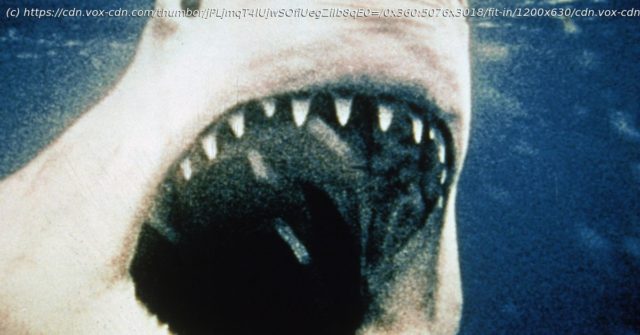Now on Netflix, Steven Spielberg’s Jaws and its awful sequels Jaws 2, Jaws 3, and Jaws: The Revenge use a broken mechanical shark to tag four different genres.
Ed note: This reconsideration of Jaws and its three sequels was inspired by all four films arriving on Netflix on Sept. 1.
Very few films have had an impact like 1975’s Jaws. It’s a one-film cinematic revolution that goes far beyond igniting Steven Spielberg’s career and giving him blank-check freedom to choose his projects, and it’s lasted a lot longer than the wave of “animals attack” films that followed it, like Piranha, Grizzly, and Alligator. In fact, some say Jaws’ massive success doomed Hollywood, steering it away from auteur-led projects and into a world where few things matter more than opening weekend numbers, mega advertising, and summer blockbuster season.
But Jaws’ success didn’t come out of nowhere, and it wasn’t a fluke. Spielberg’s movie is every bit as good as its reputation, and its sheer existence is a borderline miracle. Spielberg started with a story that easily could have become garish schlock on the screen, and used it to convince audiences that three movie stars (Roy Scheider, Richard Dreyfuss, and Robert Shaw) were really being menaced in the middle of the ocean, even though the mechanical shark meant to menace them barely worked.
Jaws is a masterclass in direction, editing, and music, and considering its profound achievement, it seems like there should have been a mad dash to replicate it — to figure out what about it worked so well for audiences, and double down. But there never really was. No Jaws sequel has ever actually attempted to capture what made Spielberg’s film so wonderful.
In adapting Peter Benchley’s hugely successful novel Jaws, Spielberg and his writers chipped away at excess subplots (most notably, an affair between two of the characters) until it was pure, lean storytelling. The core of Benchley’s narrative remained intact, though — the only thing scarier than a killer shark is the capitalistic greed that makes people deny and cover up the problem.
A central theme about masculinity and pride being tested certainly provides something for the actors to chew on, and they deliver stellar performances all around, particularly Shaw, with his haunted shark-hunter Quint. John Williams’ score includes one of the most famous motifs in cinema history, and Spielberg’s camerawork has rarely felt more precise, thanks to cinematographer Bill Butler (The Conversation and One Flew Over The Cuckoo’s Nest). When Jaws was released, an entire generation started thinking twice before even dipping their feet in the ocean.
The Jaws sequels, which all reek of desperation at least a little bit, don’t come close. They seem to find their closest peers in the slasher-film wave of the late ’70s through the 1980s. But Jaws preceded this trend, for the most part, and the way the series shifts genres from the first movie (a thrilling horror film with some Hitchcockian elements) to 1978’s Jaws 2 (effectively Friday the 13th on the water) resembles the early trajectory of The Exorcist films, another franchise from that era with a game-changing debut. Exorcist 2: The Heretic is about as far from the disturbing Catholic nightmare of William Friedkin’s The Exorcist as possible, even with John Boorman at the helm, fresh off his nomination for a Best Director Academy Award for Deliverance.






